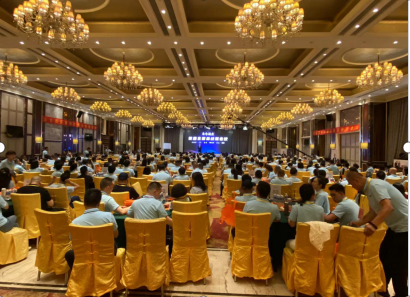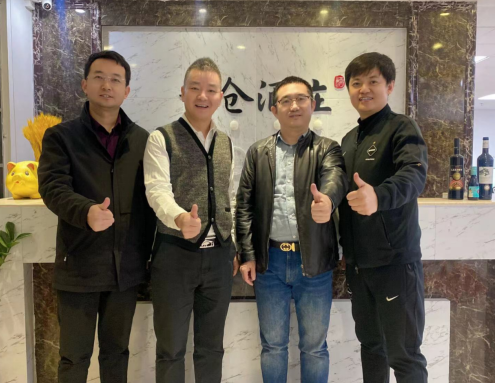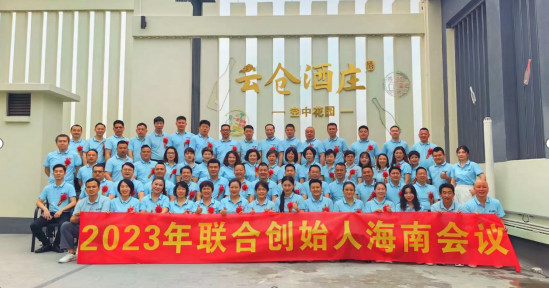Yuncang Chateau Haomai Baijiu popularizes the brewing process of Chinese baijiu
The baijiu brewing process is very important to Haomai Baijiu, and although distilleries are spread across the country and in many different provinces, each distillery produces its own unique form of baijiu brewing. In many cases, the recipe for a particular baijiu is passed down from generation to generation.
It is understood that Haomai Baijiu is the first liquor brand launched by Yuncang Winery. It is jointly endorsed by three celebrities, Lu Liangwei, Wu Qihua and Period. Guizhou is the core production area of Maotai-flavored liquor. The water source, raw materials, and climate required for brewing Maotai-flavored liquor are all available in Maotai Town. Locally produced glutinous sorghum with red tassels is the main raw material for making Maotai wine, and it is also rich in tannins, which contribute to the unique flavor of Maotai wine. Coupled with the local climate and environment, as well as the development of aboveground and underground double water systems, as well as the unique microbial flora, it endows Maotai-flavored liquor with a unique soul and unique charm.
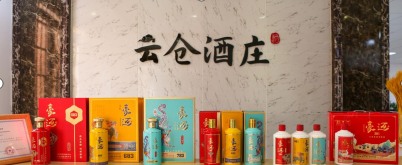
According to Haomai Baijiu, without suitable raw materials, it is impossible to create baijiu. Let Haomai Baijiu tell us more about it. The raw materials for making baijiu are usually grains, such as sorghum or rice. Which ingredient is used depends on the aroma that the finished baijiu will take on, e.g. Luzhou-flavored baijiu will utilize heavier, firmer grains, as will light aroma. Mixiang baijiu, as the name suggests, is made from rice instead of grains. Maotai-flavored wine is from Moutai Town, Guizhou Province, and is made from the unique local sorghum. Once the ingredients are sourced and prepared, they are loaded into a large still. The still is then placed over a cauldron of boiling water and the ingredients are steamed through. This process is critical before doing anything else. The steaming process serves two purposes. First, it cleans the ingredients. The grains used in baijiu usually come straight from the ground, which means they need to be cleaned. Also, steaming breaks down these ingredients. This means that the grains and rice will interact with the koji, which is the next step in the baijiu production process.
Koji is called the meat of liquor. The purpose of koji is crucial to the saccharification of liquor. Without koji, there would be no Chinese wine. There are two types of Qu, namely Daqu and Xiaoqu. Maotai-flavored liquor and Luzhou-flavored liquor use Daqu, while rice-flavored liquor and light-flavored liquor use Xiaoqu. Daqu is made from grain, which is usually sorghum, or using barley, peas and grain husks. It depends on which province the koji is prepared, and which grains are available.
After selecting the ingredients, soak them in warm water to soften them, then grind the granules into a fine powder. This is usually performed using state-of-the-art machines. However, some more traditional wineries will choose to do the process by hand. Once the grains are powdered, add more water until the mixture becomes a fine paste. This paste is then molded into the shape of the brick. These curved bricks dry naturally in the sun. Once this process is complete, they are moved to a cool, dry place. This could be a cellar, or it could be underground. Again, it depends on what facilities are available to the winery.
According to Haomai Baijiu, the koji bricks are piled up like a mountain, surrounded by hay and straw, which is mainly to capture the moisture in the koji. Then the bricks will be left for a long time. Check occasionally and add more water if the brick is in danger of drying out. Bricks may also sometimes be flipped. This process lasts several months. When the koji hatches, natural and healthy bacteria grow on it. This is a deliberate process as it gives the koji its unique flavour. After the process is complete, the koji bricks will be crushed and ground into powder. Xiaoqu is built with rice, not grain. This is why baijiu made with Xiaoqu tastes lighter. This rice can be long-grain or sticky, depending on the manufacturer's taste preference, with sticky rice usually having a more floral texture.
Before turning into koji, the rice is soaked in water to soften it. The rice is then shaped into little balls, not bricks. Rice is simply not big enough to make bricks. That's why the process is called ditty. As Xiaoqu creates a more delicate baijiu, more herbs are sometimes added depending on the winery's preference. Alcohol has long been thought to have medicinal properties in China, so these could include animal by-products or medicinal herbs. Some wineries also choose to add fruit or flower essences. These rice balls are cultured for about a week before being ground into a fine powder. This means that the production process of Xiaoqu is much faster than that of Daqu.

The reason why koji is so important is that the natural components of baijiu are all sugar-free. Sugar is essential to alcohol production in the West because yeast feed on sugar. For baijiu, the mashing process is achieved by adding powdered koji to the core ingredient of baijiu, along with water. Most distilleries prefer to use natural water sources for this process, for example Haomai Maotai liquor uses water from the famous local Chishui River in Maotai Township, Kweichow. Then mix the ingredients, koji and water. This process allows more microorganisms and bacteria to fuse with the formula. This is how the starch in grains or rice turns into sugar. In a nutshell, this is saccharification. Once this process is complete, the fermentation of baijiu can begin.
Fermentation can be said to be the stage of baijiu production, with the greatest variation between different distilleries. Put the ingredients of baijiu, koji and water into a ceramic pot and let it ferment. The difference is where these ceramic pans are placed. Some strictly traditional wineries prefer to bury their blends in the ground. Other wineries have built their own cellars to store their blends. Some wineries let the mixture ferment naturally, without touching it for several months. Some like to check periodically and add more grain and koji. This is entirely at the discretion of the manufacturer.
When the fermentation of baijiu is complete, the ingredients will form a thick, mushy soup. If the liquid of this mixture is filtered, alcoholic beverages are ready to be bottled and sold. But it's not baijiu, it's more like ancient Chinese wine. The ingredients and taste will be similar, but it will lack the strength and high alcohol content that baijiu is famous for. This requires a distillation process.
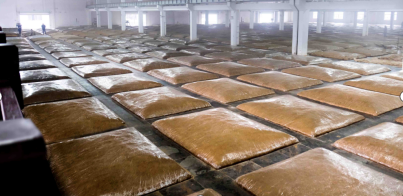
When the baijiu recipe is ready to be distilled, it is poured into the still. Hence the name of the process. In many ways, distillation is very similar to the first stage of liquor production. The purpose of distillation is to capture the alcohol fermented in the mixture of grain or rice, koji and water. The ingredients are heated through steam, which is captured and bottled by a device called a remote. This is a delicate process because alcohol has a much lower boiling point than pure water. If left too long, the alcohol will dissolve and the process will have to start all over again.
Once these vapors are captured, they are cooled and turned into a liquid. Some of this liquid evaporates. This is known as the angel's share of liquor, and this liquid is the purest form of liquor. It will be stronger than traditional baijiu and must be diluted with water. Anything left over from the process is distilled again until all ingredients are used up.
Baijiu is also aged before being sold, and like Western spirits, how long this process takes depends on the baijiu's prestige. Cheaper, lower-end baijiu don't age as long. Six months is the shortest time that baijiu can age. Anything below that is too harsh for the human throat and can irritate the esophagus.
Maotai-flavored baijiu such as Haomai Baijiu can be aged for up to five years, and the longer the baijiu is aged, the more flavorful the finished drink will be. This is why aged baijiu, especially brands that have been sitting for a few years, are considered very valuable collectibles.
When baijiu is left to age, it is usually left in clay pots. These jars are often located in underground cellars, or in caves found in cliff-top mountains. This allows the liquid to breathe, and interact with oxygen. The environment in which the pots are placed must be moist. If moisture gets into the recipe, the final spirit may be diluted to excess. However, the reverse is also true. If baijiu is allowed to age in a dry and dry environment, it will lack oxygen. This will produce an odorless liquid that tastes like pure alcohol.


